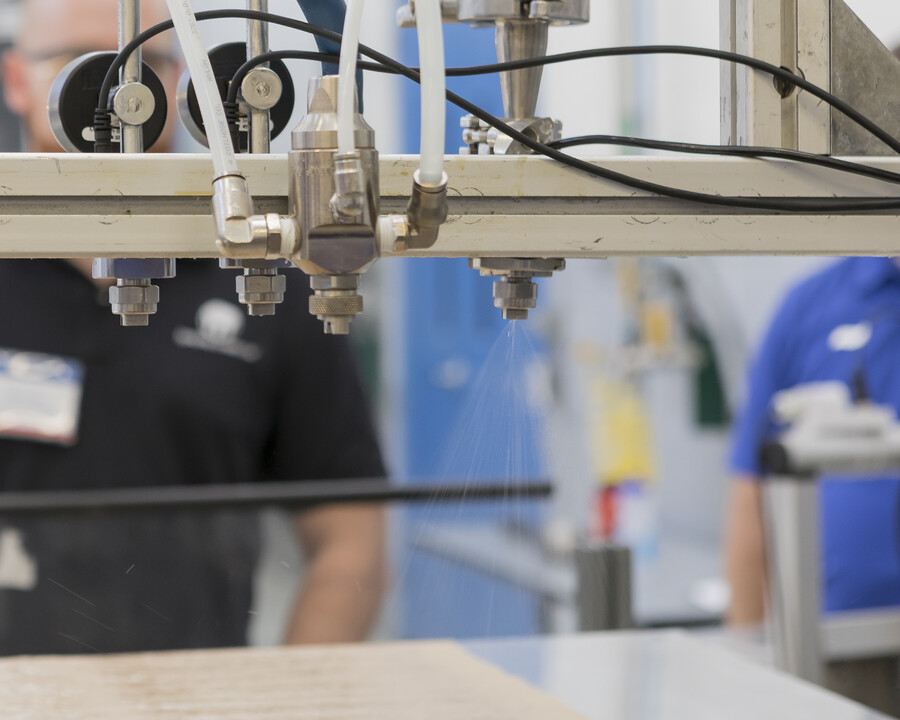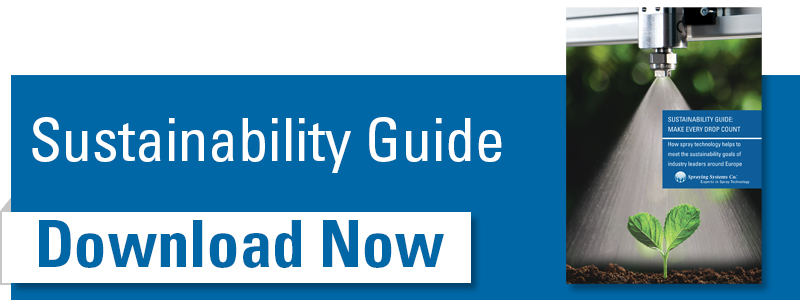So, you’ve got a can of paint. You need to spray paint a plywood board. You’re wearing gloves, eye protection, and, if you’re in an enclosed area, a mask. Why?
Thanks to the spray can nozzle’s construction, most of the spray ends up on the plywood board – but not all of it. When you spray paint, some might splatter onto the ground or on your clothes and hands and, luckily you’re wearing a mask or dangerous chemicals would end up in your lungs.
Congratulations! You’ve just received your first lesson in transfer efficiency.
Loosely defined, transfer efficiency is the amount of spray that leaves the spray tip versus the amount that ends up on the intended surface. This number is usually expressed as a percentage. So, if you have 100 fluid ounces of spray paint and about 80 fluid ounces lands on the plywood board, the spray can’s transfer efficiency is 80%.
This percentage is an important figure for manufacturers and suppliers as it indicates how effective a spray nozzle or tip is.
Maximizing transfer efficiency reduces material costs, waste, and the potential adverse health effects of overspray. Furthermore, finding our customers the best solution with the highest transfer efficiency correlates directly with positive sustainability markers. By decreasing unnecessary costs, reducing material waste, and improving worker safety, our customers are creating more sustainable practices.
But how do we maximize transfer efficiency? First, by quantifying it.
Quantifying a spray’s transfer efficiency can only be done accurately through laboratory spray testing. Depending on the current system and our customer’s goal, a number of spray characterization instruments can be used to determine and maximize transfer efficiency. One such tool, and the one used most frequently for transfer efficiency testing, is the laboratory conveyor.
Let’s say, for example, we have a customer who would like to perfect the amount of chocolate sprayed onto cookies and minimize the amount sprayed anywhere else. In this case, the customer would like to maximize the chocolate coating’s transfer efficiency.
Our first step would be to measure the amount of chocolate sprayed from the nozzle. We’ll say this came out to precisely one pound. Next, we measure the weight of the cookies without the chocolate coating. We’ll say this is also one pound. We then align the cookies on the conveyor according to the customer’s current operating procedure and send them through the conveyor while spraying the one pound of designated chocolate coating onto the cookies.
Once the cookies have been coated, we’ll measure the total weight. For a transfer efficiency of 100%, the total weight of the coated cookies would be precisely two pounds. Meaning the one pound of chocolate coating had completely coated the one pound of cookies and no additional coating sprayed anywhere else.
This is very difficult to achieve, especially in this kind of coating application. An ideal transfer efficiency in this case, would be any improvement in the customer’s current results, and we like to see a transfer efficiency MINIMUM of 80%. In a conveyor coating application like this one, a PulsaJet® solution will almost always improve the transfer efficiency.
The laser sheet imaging system, or LSI, can also be used to measure transfer efficiency. By directing a laser sheet at the spray and taking many pictures with our high-speed camera, we can analyze a spray’s distribution and shape. With these images and the laser sheet highlighting the spray, we can see if there are excess droplets floating around. These images would indicate whether droplets are or are not sticking to the intended surface. Depending on the customer’s goals for testing, we can quantify these droplets as the spray’s transfer efficiency.
In the end, therefore, by measuring and quantifying transfer efficiency, we have a control upon which to improve. Any improvement in transfer efficiency means less waste, less cost and improvements in worker safety. As such, any improvement in transfer efficiency is a direct improvement in sustainable business operations.



